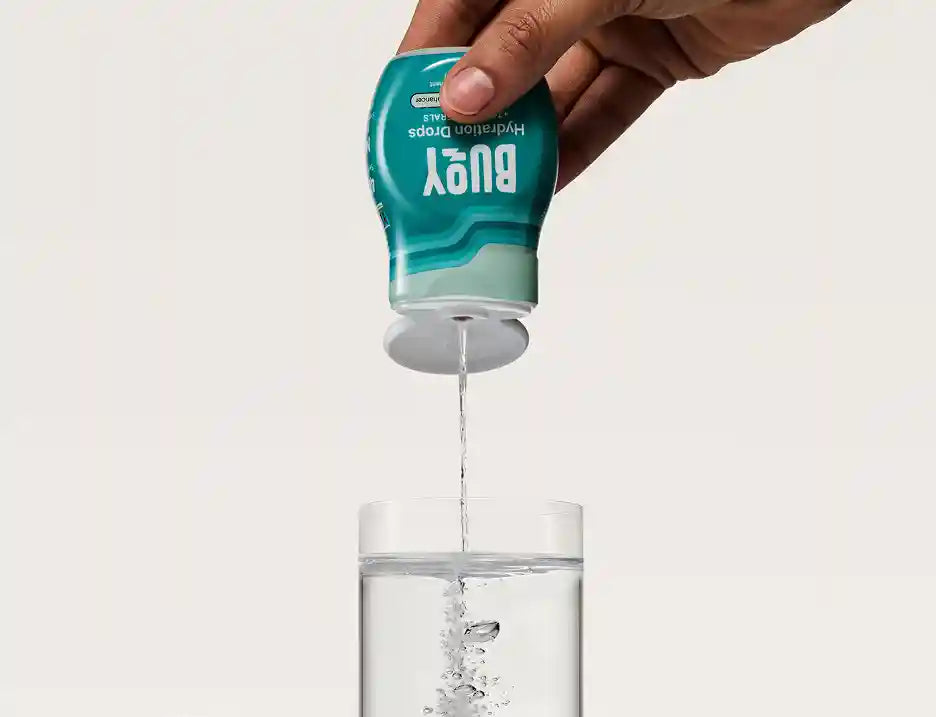
How to Create a POTS Management Plan
Living with Postural Orthostatic Tachycardia Syndrome (POTS) is a unique journey for each person. While it can present challenges, creating a personalized management plan can empower you to take charge of your well-being and enhance your daily life.
Think of your POTS management plan as your personal roadmap to help you navigate the ups and downs of this condition. It’s all about getting to know your body, understanding what triggers your symptoms, and finding strategies that work for you.
Essential Takeaways:
- Create a Personalized Management Plan: Building a tailored POTS management plan that addresses your specific symptoms, triggers, and goals is crucial for effectively managing the condition and improving your quality of life.
- Consistent Tracking Leads to Better Management: Regularly tracking your symptoms, triggers, and responses to various strategies helps you understand your body better, communicate more effectively with healthcare providers, and make informed adjustments to your management plan over time.
Let’s explore how you can create a POTS treatment plan that puts you in the driver’s seat of your health journey, allowing you to live life on your own terms.
- Understanding POTS and Its Symptoms
- The Importance of a Management Plan
- Steps to Create an Effective POTS Management Plan
- Tracking POTS Symptoms
- Incorporating Lifestyle Changes
- Medical Treatments and Therapies
- Creating a Support System
- Regular Review and Adjustment of the Plan
- Take Control of Your POTS with a Personalized Management Plan
Understanding POTS and Its Symptoms
To make sure we’re all on the same page, let’s look at what this condition is all about. POTS is a form of dysautonomia that affects the body’s autonomic nervous system. Most people with POTS experience an abnormal increase in heart rate when they stand up, leading to a range of symptoms that can vary from person to person (1).
Common POTS Symptoms
Other common symptoms include:
- Dizziness or lightheadedness
- Fatigue
- Brain fog
- Exercise intolerance
- Headaches
- Blurry vision
- Heart palpitations
- Tremors
- Nausea
- Fainting
These symptoms can make even simple tasks feel overwhelming. Understanding the causes of POTS and its symptoms is the first step toward managing this condition and reclaiming your quality of life.
The Importance of a Management Plan
Creating a management plan is important because it gives you a sense of control over your condition. Think of it as having a trusted friend by your side, guiding you through the tough days and helping you celebrate the good ones.
A well-crafted POTS treatment plan can help you:
- Better understand and manage your symptoms
- Reduce stress and anxiety related to your condition
- Improve your overall quality of life
- Communicate more effectively with your healthcare team
Having a management plan empowers you to take charge of your health and live your life to the fullest despite the challenges of having POTS. Remember, you’re not just managing your symptoms; you’re reclaiming your life.

Exercising regularly can improve POTS symptoms over time by improving your cardiovascular fitness and muscle pump function.
Steps to Create an Effective POTS Management Plan
Creating your POTS management plan is a personal journey, but here are some steps to get you started.
Step 1: Assess Your Symptoms
Take time to reflect on your specific symptoms and how they affect you. Write them down, so you can track your progress over time.
Step 2: Set Realistic Goals
What do you want to achieve? Maybe it’s being able to go for a short walk or cook a meal without feeling exhausted. Setting achievable goals can help you stay motivated and measure your progress.
Step 3: Identify Triggers
Pay attention to what seems to worsen your symptoms. Is it certain foods, activities, or situations? Common triggers might include prolonged standing, hot environments, dehydration, certain foods (e.g. high-carb meals), lack of sleep, and stress.
Step 4: Develop Strategies
Based on your triggers and goals, what POTS management strategies can you implement to help you control your symptoms? Consider these lifestyle changes:
- Increased Fluid and Salt Intake: Adding more fluids and salt to your daily routine helps maintain blood volume and improve circulation.
- Physical Counter-Maneuvers: Techniques like leg crossing, muscle tensing, or squatting can help maintain blood pressure when standing (2).
- Regular Exercise Program: Follow a carefully planned, progressive exercise routine. Start with recumbent exercises and slowly build up to more upright activities like short walks, as tolerated (3).
- Stress Management Techniques: Incorporate regular exercise, healthy diet, yoga, meditation, adequate sleep, deep breathing exercises, and journaling into your routine (1,4).
- Medication Plan: Work with your doctor to develop a medication plan that addresses your specific symptoms or underlying issues.
Developing effective strategies based on your specific symptoms is the key to managing POTS successfully. But overhauling your life can be overwhelming.
To make it easier, start by implementing one or two strategies at a time, giving yourself time to adjust and evaluate their effectiveness.
Step 5: Make a Daily Routine
Developing a structured daily routine that incorporates your management strategies can be a powerful tool in navigating life with POTS. Here's a framework to help you get started:
Morning:
- Begin Your Day with Hydration: Keep a water bottle or electrolyte drink by your bedside.
- Ease into Movement: Start with gentle, recumbent exercises before getting out of bed.
-
Dress for Success: Put on your compression garments before standing up.
Throughout the Day:
- Nourish Regularly: Opt for frequent, smaller meals to maintain energy levels.
- Schedule Rest Periods: Plan short breaks to prevent overexertion.
-
Stay Hydrated: Aim for consistent fluid intake throughout the day.
Evening:
- Wind Down Mindfully: Incorporate relaxation techniques like deep breathing or gentle stretching.
- Prepare for Restful Sleep: Create a calm environment and stick to a consistent bedtime.
What works best can vary from person to person. Be patient as you discover the right combination of strategies for you. It’s crucial to work closely with your healthcare provider, especially when it comes to exercise programs and medication plans.
This is your personalized plan—don't hesitate to adjust it as needed to fit your unique needs and lifestyle. The goal here is to create a routine that empowers you to manage your symptoms effectively while still enjoying your daily life.
Tracking POTS Symptoms
Tracking your symptoms can help you spot patterns and identify triggers you might otherwise miss. Consider keeping a symptom journal or using a health tracking app.
What to Track
To get a comprehensive view of how your condition fluctuates throughout the day, consider tracking things like:
- Heart Rate and Blood Pressure: Monitor at different times of the day to observe fluctuations.
- Energy Levels: Note times when you feel most energetic and lethargic.
- Sleep Quality: Include the duration of sleep and any disturbances you experience.
- Diet and Hydration: Keep track of what you eat and drink, and record how it affects your symptoms.
- Physical Activities: Document the type and intensity of activities and how they impact your condition.
- Stress Levels: Observe what triggers stress and how you respond to stressful situations.
These details can provide valuable insights into how your body reacts to different environments and activities.
Why POTS Symptom Tracking is So Important
This information can be invaluable when discussing your condition with your healthcare provider. It can also give you a clearer picture of how different things affect your symptoms, helping you make more informed decisions about managing POTS day-to-day.
By consistently tracking your symptoms, you empower yourself with the knowledge to better understand and manage your condition. Remember, this is a tool to help you take control of your health journey, one step at a time.

Tracking POTS symptoms in a journal can help you better understand and manage your condition.
Incorporating Lifestyle Changes
Small changes in your daily routine can make a big difference in managing POTS. Here are some areas to consider.
Follow a Healthy Diet
What you eat can significantly impact your POTS symptoms. Consider these dietary adjustments:
- Increase your salt and fluid intake (under medical supervision).
- Focus on whole, nutrient-dense foods.
- Consider eating smaller, more frequent meals.
For more detailed guidance, check out our POTS Diet and Nutrition Guide.
Optimize Hydration
Staying well-hydrated is crucial for managing POTS. Proper hydration helps maintain blood volume, which can reduce symptoms like dizziness and rapid heartbeat. Here’s how to boost your fluid intake:
- Drink plenty of water throughout the day, aiming for 8-12 cups per day or more as recommended by your doctor.
- Some find electrolyte supplements helpful in maintaining proper fluid balance.
- Start your day with a glass of water before getting out of bed.
- Keep a water bottle with you at all times.
- Pay attention to the color of your urine—it should be light yellow, indicating good hydration.
Remember, consistency is key—it’s better to sip water regularly throughout the day than to gulp large amounts at once. These simple strategies can help you stay on top of your hydration needs and better manage your POTS symptoms (1).
Exercise Regularly
Consistent, gradual exercise can improve POTS symptoms over time by boosting your cardiovascular fitness and muscle pump function, which helps blood flow back to your heart more efficiently.
Here’s how to approach exercise with POTS:
- Start with exercises like swimming, recumbent biking, or rowing.
- As you build strength and stamina, slowly incorporate more upright exercises like gentle walks or strength training a couple times a week.
- Always warm up and cool down properly to avoid sudden changes in heart rate.
- Consider working with a physical therapist who understands POTS to develop a safe exercise plan tailored to your needs (1,5).
Remember, the key is to start slow and gradually increase your activity level. Listen to your body and don’t push yourself too hard. With time and consistency, you may find that exercise becomes an essential tool in managing your POTS symptoms.
Improve Your Sleep
Good sleep is essential for managing POTS. Add these sleep hygiene practices to your nightly routine:
- Establish a consistent sleep schedule.
- Create a cool, dark, and quiet sleep environment.
- Avoid screens for at least an hour before bed.
- Consider elevating the head of your bed slightly to help with blood flow (1,6).
Quality sleep can make a big difference in how you feel and function with POTS. By following these sleep hygiene practices, you’re giving your body the best chance to rest and recover.
Remember, it might take some time for your body to adjust to new sleep habits, so be patient with yourself. If sleep continues to be a challenge, don’t hesitate to discuss it with your healthcare provider—they might have additional strategies to help you get the rest you need.
Manage Stress
Managing your day-to-day stress can have a surprising effect on your overall health. Here are some strategies:
- Practice relaxation techniques like deep breathing or meditation.
- Engage in hobbies or activities you enjoy.
- Consider talking to a therapist or counselor for additional support (1).
Remember, it’s not about making drastic changes overnight. Small, consistent steps can lead to big improvements over time. Get more ideas in our comprehensive guide: Lifestyle Changes to Manage POTS.
Medical Treatments and Therapies
While lifestyle changes are important, medical treatments often play a large role in managing POTS, as well. These might include medications to help regulate your heart rate and blood pressure, physical therapy to improve strength and cardiovascular fitness, and compression garments to improve blood flow (1,5,7).
Always work closely with your healthcare provider to find the right combination of treatments for you.

Building a strong support system, including friends, family, and support groups, can significantly help in managing POTS.
Creating a Support System
Living with POTS can sometimes feel isolating, but you’re not alone. Building a strong support system can make a world of difference. This might include:
- Family and friends who understand your condition.
- Support groups (online and in-person) where you can connect with others who have POTS (8).
- Mental health professionals who can help you navigate the emotional aspects of chronic illness.
- Healthcare providers who specialize in POTS or dysautonomia.
Remember, seeking support is a sign of strength, not weakness. It takes courage to reach out and acknowledge when you need support.
Tips for Using Your Support Network
Here are some tips for building your support system and using it to help manage your condition:
- Be Open About Your Needs: Clearly communicate what kind of support you need, whether it’s emotional support, help with daily tasks, or going with you to medical appointments.
- Educate Your Support Network: Share information about POTS with your loved ones to help them understand what you’re experiencing. Want an easy way to do this? Send them a link to Buoy’s POTS Guides where they can explore all the best ways to support you on your POTS journey.
- Set Boundaries: It's important to let people know when you need space or when certain kinds of support aren't helpful. Be honest but kind when communicating your limits.
- Reciprocate When You Can: While you may often be on the receiving end of support, look for ways to give back when you’re able. This can help you maintain balanced relationships and give you a sense of purpose with this condition.
- Explore Different Types of Support: This could include joining online forums, attending local support group meetings, or working with a therapist who specializes in chronic illness. Don't be afraid to try different options to find what works best for you.
- Be Patient with Yourself and Others: Building a support system takes time. POTS is only recently becoming common knowledge, and many people have still never heard of the condition. It’s okay if your friends and family don’t understand your condition right away.
By actively cultivating your support network, you’re not only helping yourself manage POTS more effectively; you’re also creating a community of understanding and compassion around you.
Remember, living with POTS is a journey, and having a strong support system can make that journey more manageable. Don't hesitate to reach out and connect with others who can offer understanding, empathy, and practical help along the way.
Regular Review and Adjustment of the Plan
Your POTS management plan is not set in stone. As your symptoms change or you discover new strategies, your plan should evolve, too. Set aside time regularly to review your plan, and ask yourself the following questions:
- Are your current strategies working?
- Have your symptoms or goals changed?
- Do you need to adjust your medications or therapies?
Be open to making changes and don’t be discouraged if something that once worked stops being effective. Your body is unique, and finding the right balance may take time.
Take Control of Your POTS with a Personalized Management Plan
Creating a POTS management plan is an act of self-care and empowerment. It’s about taking charge of your health and working toward the best possible quality of life. Remember, you’re not just managing your condition; you’re working hard to improve your overall well-being.
Embrace the Journey
As you start on this journey, be patient and kind to yourself. Celebrate the small wins and learn from the setbacks. Your POTS management plan is a powerful tool, but your resilience and determination are really what will make all the difference.
Explore Further Resources
Ready to dive deeper into managing your POTS? Explore our other resources on effective treatments, coping strategies, and expert tips. Your journey to better health starts here, and we’re here to support you every step of the way.

Manage your symptoms with Buoy’s Rescue Drops, a 6x stronger formula made specifically for POTS.
References:
-
Cleveland Clinic. (2022). Postural Orthostatic Tachycardia Syndrome (POTS). Retrieved from https://my.clevelandclinic.org/health/diseases/16560-postural-orthostatic-tachycardia-syndrome-pots
-
Dysautonomia Support Network. (2021). Counter-Pressure Maneuvers. Retrieved from https://www.dysautonomiasupport.org/counter-pressure-maneuvers/
-
Dysautonomia International. (2019). Exercises for Dysautonomia Patients. Retrieved from https://www.dysautonomiainternational.org/page.php?ID=43
-
Raj, V., Opie, M., & Arnold, A. C. (2018). Cognitive and Psychological Issues in Postural Tachycardia Syndrome. Autonomic Neuroscience: Basic & Clinical, 215, 46–55. Retrieved from https://www.ncbi.nlm.nih.gov/pmc/articles/PMC6160364/
-
Dysautonomia International. (2019). Lifestyle Adaptations for POTS. Retrieved from https://www.dysautonomiainternational.org/page.php?ID=44
-
POTS UK. (n.d.). Important Lifestyle Changes: Sleep. Retrieved from https://www.potsuk.org/managingpots/sleep/
-
Bourne, K. M., Sheldon, R. S., Hall, J., Lloyd, M., Kogut, K., Sheikh, N., Jorge, J., Ng, J., Exner, D. V., Tyberg, J. V. & Raj, S. R. (2021). Compression Garment Reduces Orthostatic Tachycardia and Symptoms in Patients with Postural Orthostatic Tachycardia Syndrome. Journal of the American College of Cardiology, 77(3), 285–296. Retrieved from https://pubmed.ncbi.nlm.nih.gov/33478652/
- Dysautonomia International. (n.d.). Find a Support Group. Retrieved from https://www.dysautonomiainternational.org/page.php?ID=24




